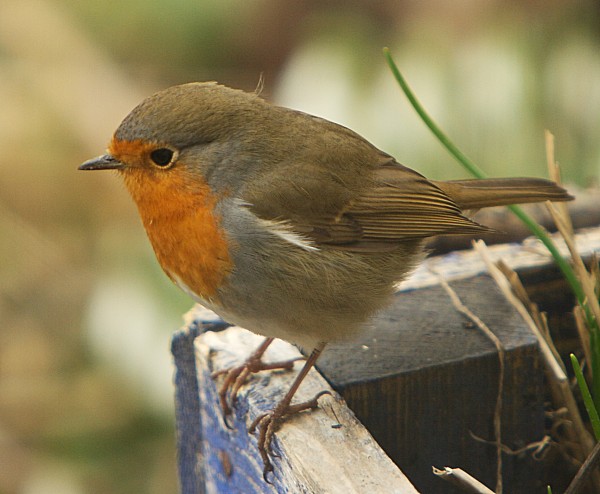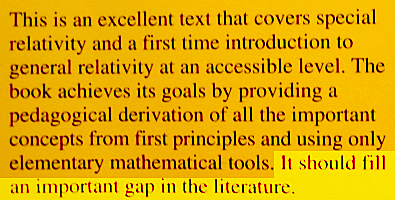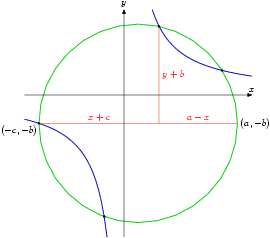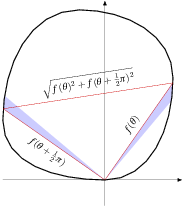2005-04-10: Life, death and moral values
Up to now, my blog has hardly touched on political issues. It is not likely to in the future, at least not frequently – but now I find myself provoked into writing on a political issue anyway, even though I know full well that hardly anybody reads my blog. Or rather, an issue of religion and morality. To some people, there is no difference. Maybe they're right: There is after all no question that political decisions have life and death consequences.
A bit of background first. I am an atheist, and have been so for most of my life. This means that I do not believe in the existence of any god. (I do not capitalize the word, because there are many religions in the world, and their concept of god is not the same.) Of course, I am not so stupid as believing I can prove that there is no god, only that I know of no compelling evidence for the existence of such a being, and therefore find believing in one useless and counterproductive.
I also consider myself a philosophical materialist, which means that I believe that the material world is the only world there is. All our beliefs, our values, our loves and sorrows, even science and mathematics, are just manifestations of our material brains existing in and interacting with a material universe. Which does not make them any less real or valuable: But beliefs that run counter to fact can be downright harmful.
Which brings me to the topic of today's post. (I apologize for the length of this. I just don't know how to make it any shorter.)
Being who I am, I have always had some difficulty understanding the world from the perspective of the religious. And yet I feel I should make the attempt: After all, the majority of the world's people are religious. Particularly alien, to my mind, is the American so called Christian Right. Recently, the web site www.breakpoint.org was recommended to me as a good perspective on the world as American Christians see it.
Naturally, I was intrigued and went to have a look.
I find this stuff hard to read: Oh, I understand the English very well, thank you very much, but still, it's a bit like these folks are speaking Chinese or something. Their thought patterns are just too alien for me to follow.
That is, until I came upon the article Material Girls – How Feminism Betrayed Terri Schiavo by Leslie Carbone.
This is the article that provoked me so much. In fact, this is the most outrageously bigoted piece of writing I have ever stumbled across in my life. Yes, I looked up bigoted in the dictionary to be sure, English after all not being my mother tongue: A bigot is a person obstinately or intolerantly devoted to his or her own opinions and prejudices. Based on this one article, that in my opinion describes Leslie Carbone to a tee.
Just read this opening sentence:
On March 31, 2005, thirty years after feminism's hey-day in the 1970s, a woman died from dehydration, on the orders of her adulterous husband, who was supported by the courts in his quest to end his wife's life.
Can you say “loaded language”? I knew you could.
To be sure, the Schiavo case is a tragedy. But wherein lies the tragedy? That is where the opinion divides.
The death of Theresa Schiavo was of course tragic. But that death – the death of the person – occurred in 1990, not this year. That is when most of her brain died, and with it everything that made her who she was. Only her body – including the brain stem, which is the reason for all the controversy – lingered on until this March. From that day on, Michael Schiavo was a widower in fact, if not in the eye of the law, even if it took him years to come to terms with it. The second, smaller, tragedy is the aftermath, including numerous court cases and the break between Michael Schiavo and his parents-in-law. But the recent expiration of Theresa Schiavo's body is no tragedy at all, for Theresa was already long gone.
I could go on, but it is better for you to read this article from the New England Journal of Medicine, which explains all this much better than I ever could.
So, adulterous? Give me a break. What is clear is that Michael Schiavo, as well as Theresa's parents, maintained their contact with Theresa (what was left of her), visiting her and taking active part in her care, for years, which is much more than most people would do in a similar situation. Michael Schiavo even educated himself as a nurse so he could take a more active part in Theresa's care. That he found another woman seven years later, who he now lives with and has two children with, can hardly be called adulterous, no matter that he was still legally married to Theresa.
And was the feeding tube removed on Michael Schiavo's orders? Not at all. This was ordered by the courts. Michael Schiavo had taken this case to the courts precisely because he could not, or would not, decide it alone. If Leslie Carbone had been even remotely interested in facts, she could easily have read the court documents. All the court decisions are available online, together with plenty of commentary, at Abstract Appeal. But no, she obviously didn't want her case sullied by facts.
What should be clear even on a first reading, is that the so-called “affidavit” of Carla Iyer is hardly credible: It portrays not only a totally selfish, almost murderous Michael Schiavo, denying even basic care of Theresa, but a conspiracy of doctors and nurses all going along with him in this. If you read the court decision of September 17, 2003, you will find that the judge has carefully considered this testimony, and dismissed it as lacking all credibility. I will not dirty my blog by quoting from it, or even linking to it. (But google can find plenty of copies for you if you must look.)
Leslie Carbone goes on:
That court after court could find in favor of the death desired by a woman's cold-hearted, adulterous husband over the life desired by her loving, heart-broken parents shows the corruption of modern culture. Theresa Schiavo's death also marks a milestone in modern culture's embrace of feminist values.
Here it is again. Not only adulterous (again), but cold-hearted as well. Whereas Theresa's parents are loving and heart-broken. I am sorry, but I don't see a shred of evidence supporting this difference in portrayal of the parties to the dispute. Leslie Carbone's vicious attacks on Michael Schiavo in a highly public forum hardly strikes me as consistent with Christian values, but then not being a Christian myself, I will not presume to lecture on Christian values to Christians. Instead, let me state that such an attack would not be consistent with my values, or any value system that I can sympathize with.
The corruption of modern culture? I, for one, do not see anything corrupt in the notion that people can choose to forego life extending treatment when there is no hope of further life. All the courts have done is to determine that this is what Theresa Schiavo would have wanted. And, contrary to popular belief, they did not come to this conclusion on Michael Schiavo's say-so. On the contrary, they recognized his conflict of interest, and relied instead on the testimony of others who knew her well. This is what “court after court” did, and this is the finding they came to consistently, in accordance with Florida law. That so many people on the Christian right evidently have no respect for the court's decision, or their competence to make such decisions, or indeed for the right of the individual to choose the manner of their death even the most extreme of circumstances, is nothing short of scandalous.
Not to mention, these same people tend to have no similar qualms with respect to the death penalty. Go figure.
You may have noted a reference to feminism in the two brief passages I quoted. Yes, an all out attack on feminism what Leslie Carbone is really about here. The litany of sins and problems of the family, and society at large, that she lays at the feet of feminism is impressive. I'll leave most of it alone – no doubt, others will pick these arguments apart – but I have to comment on this little bit:
[...] a materialistic view of life, according to which its value is not absolute but is instead subject to its perceived utility.
As I explained in the beginning, I profess a materialistic view of life, as on everything else. I also value life. But what is this about perceived utility? I don't believe Leslie Carbone has ever met a philosophical materialist, let alone talked to one. This unbridled nonsense is just a figment of her own fantasies of what materialists must be thinking, nothing more. Okay, so I don't see the value of life as absolute. There – I have said it, are you happy now? I have no qualms about crushing the occasional insect, though I only do it if they go places where I don't want them, or by accident, because after all I do not carefully sweep them away from the path before me when I walk. I also eat meat. And I eat salad. The lettuce was alive too, you know. Oh, but now I'm confusing Buddhism with Christianity? Is it so that only human life has absolute value in the Christian world view? But what is human life? To me, human life – the kind that has value – lies in the cognitive abilities. This is not to say that a Nobel laureate is more valuable than either Leslie Carbon, myself, a baby, or a mentally retarded or otherwise handicapped human. Ranking the value of human life on such flimsy evidence flies in the face of everything that makes us human. We must indeed err on the side of caution when we decide who is or is not human. But when there is no brain there anymore to support cognition, when indeed most of the brain is replaced by spinal fluid, then the human being is gone. Theresa Schiavo died fifteen years ago. At the other end of life – the fetus – I see it the same way: It is only as the brain begins to form and function that a human being is gradually coming into being. That has obvious consequences for my views on abortion, but I'd better stop here, before this blog entry gets out of hand.
I might add that when I say that human life has value, this is not something I see as a necessary consequence of the materialistic world view. On the contrary, the universe is notorious for not caring whether we live or die. But our fellow human beings do, because our biology and our culture conspire to make us that way. We have the ability to choose to reject that heritage, but fortunately, most of us don't. Moreover, we take steps to protect ourselves and each other from those who do, and rightly so.














